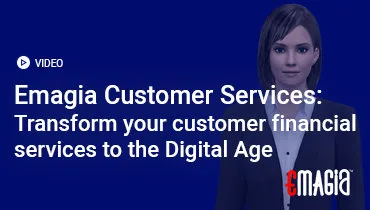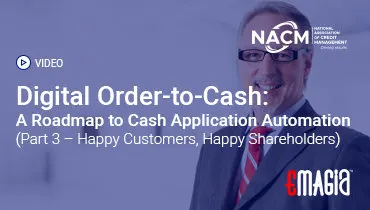In today’s interconnected business world, the ability to extend and manage credit efficiently is a cornerstone of growth, particularly in the Business-to-Business (B2B) sector. Companies frequently offer credit terms to their clients, allowing them to purchase goods or services now and pay later. This system, while fostering strong relationships and facilitating sales, hinges entirely on a robust and accurate credit assessment process. At the very beginning of this process lies the credit application for business.
Traditionally, a business credit application form was often a static, multi-page PDF or a physical document, requiring applicants to print, fill out by hand, scan, and email or fax. This cumbersome process was not only time-consuming and prone to errors but also created significant friction for potential customers, especially those on the go. In an era where digital convenience is paramount, such outdated methods can deter new business and slow down the entire Order-to-Cash cycle.
This is precisely why the shift towards mobile responsive credit applications is not just a trend, but a strategic imperative. By optimizing the business credit application for seamless use on smartphones and tablets, companies are transforming the initial touchpoint of their credit process. This guide will delve into what is a credit application, the challenges of traditional forms, the profound benefits of mobile responsiveness, key features to look for, and best practices for implementing a digital, user-friendly credit application that accelerates approvals and enhances the customer experience.
Understanding the Foundation: What is a Credit Application?
Before exploring the mobile revolution, it’s essential to grasp the fundamental purpose and components of a credit application for business.
The Core Purpose of a Business Credit Application
A business credit application is a formal document or digital form that a company submits to a potential creditor (e.g., a supplier, vendor, or financial institution) when seeking to establish credit terms or a line of credit. The primary purpose of this application is to gather essential information about the applicant business, enabling the creditor to assess its creditworthiness and determine the appropriate credit limit and payment terms. It serves as a crucial risk mitigation tool, helping to reduce the likelihood of unpaid debts.
Key Elements of a Comprehensive Corporate Credit Application Form
While the specific details may vary, a robust commercial credit application typically requests comprehensive information to paint a clear financial picture of the applicant. Common sections include:
- Business Information: Legal name, trading name, address (headquarters and any additional locations), phone, email, website, tax ID number, type of business, date of incorporation, and number of employees.
- Ownership and Management Details: Names and titles of key executives, owners, and decision-makers, along with their contact information and ownership percentages.
- Financial Information: Annual revenue, profit margins, cash flow statements, balance sheets, income statements, and sometimes financial projections.
- Bank References: Name, address, and contact details for the applicant’s primary banking institution, including account numbers.
- Trade References: Contact information for other suppliers or vendors with whom the applicant has established credit relationships, along with details on payment history and credit terms. This provides insight into past payment behavior.
- Credit Amount and Terms Requested: The specific credit limit being sought and the preferred payment terms.
- Authorization and Agreement: A section where an authorized representative certifies the accuracy of the information and authorizes credit checks and verification. This often includes an acknowledgment of terms and conditions.
- Personal Guarantee (Optional): For smaller or newer businesses, a personal guarantee from the owner may be requested to secure the debt.
These elements form the backbone of any effective credit application template for business.
The Challenges of Traditional Business Credit Applications
Despite their critical role, traditional, non-mobile-friendly business credit applications present numerous hurdles that can impede efficiency and frustrate both applicants and credit teams.
1. Poor User Experience and High Abandonment Rates
Static PDF or paper-based forms are inherently inconvenient in today’s mobile-first world. Applicants often face:
- Printing and Scanning Hassles: Requiring a printer, scanner, and physical signatures, which are not always readily available.
- Manual Data Entry: Tedious and error-prone process of filling out fields by hand or using clunky PDF editors.
- Lack of Auto-Fill/Validation: No smart features to guide the user, leading to incomplete or incorrect submissions.
- Device Incompatibility: Forms not rendering correctly on smaller screens, leading to frustration and abandonment.
This friction often results in high abandonment rates, meaning fewer completed credit applications for businesses.
2. Slow Processing Times and Delayed Approvals
The manual nature of traditional applications significantly prolongs the entire credit assessment process:
- Delayed Submission: Time taken by applicants to complete and return the form.
- Manual Review and Data Entry by Creditor: Credit teams must manually extract data from received forms, often re-keying it into their internal systems. This is a major bottleneck in the credit application process.
- Back-and-Forth for Missing Information: Incomplete forms require follow-up, adding days or weeks to the process.
- Lack of Real-time Data Integration: Manual processes prevent real-time pulling of credit reports or financial data, slowing down underwriting.
These delays directly impact Days Sales Outstanding (DSO) and can hinder a business’s ability to quickly onboard new customers.
3. Increased Errors and Inaccuracies
Human error is an unavoidable consequence of manual processes:
- Typographical Errors: Mistakes during manual data entry by either the applicant or the credit team.
- Missing Information: Fields left blank due to oversight or confusion.
- Illegible Handwriting: Leading to misinterpretations and further delays.
These inaccuracies can lead to incorrect credit decisions, increased risk, and time-consuming rework.
4. Limited Scalability and High Operational Costs
As a business grows, managing a high volume of manual business credit applications becomes unsustainable. It requires increased headcount, physical storage, and administrative overhead. This lack of scalability restricts growth and inflates operational costs for the credit department.
The Power of Mobile Responsive Credit Applications: A Modern Solution
Embracing mobile responsive credit applications transforms these challenges into opportunities, offering a streamlined, efficient, and user-friendly experience for all parties involved.
1. Enhanced User Experience and Higher Completion Rates
A mobile-optimized business credit app form is designed to adapt seamlessly to any screen size, from desktops to smartphones. This ensures:
- Intuitive Navigation: Easy-to-use interfaces with clear fields and logical flow.
- Auto-Fill and Smart Validation: Features that pre-populate known information and validate entries in real-time, reducing errors and speeding up completion.
- Convenience: Applicants can complete the form anytime, anywhere, directly from their mobile device, significantly boosting completion rates for a credit application for business.
- Digital Signatures: Secure e-signature capabilities eliminate the need for printing, signing, and scanning.
This focus on user experience is critical for a positive first impression and efficient data capture.
2. Accelerated Credit Approval Process
Digital, mobile-responsive applications drastically cut down approval times:
- Instant Submission: Forms are submitted electronically the moment they are completed.
- Automated Data Extraction: Data is automatically captured and integrated into the credit management system, eliminating manual data entry for the credit team.
- Real-time Credit Checks: Integration with credit bureaus and financial data providers allows for instant pulling of credit reports and financial statements, speeding up the credit application process step by step.
- Automated Workflows: Rules-based automation can trigger immediate credit scoring, risk assessment, and even preliminary approval for eligible applicants.
This acceleration is vital for quickly onboarding new clients and recognizing revenue faster.
3. Improved Accuracy and Reduced Risk
Digital forms with built-in validation significantly reduce errors:
- Mandatory Fields: Ensures all required information is provided.
- Format Validation: Prevents incorrect data types (e.g., text in a number field).
- Conditional Logic: Presents only relevant questions based on previous answers, simplifying the form and reducing confusion.
- Data Integrity: Direct integration minimizes the risk of transcription errors.
Higher accuracy leads to more reliable credit decisions and lower risk of bad debt, strengthening the overall corporate credit application process.
4. Enhanced Scalability and Cost Efficiency
Digital solutions are inherently scalable, allowing businesses to handle increasing volumes of credit applications for businesses without proportional increases in manual effort. This leads to:
- Reduced Administrative Costs: Less printing, mailing, scanning, and manual data entry.
- Optimized Staffing: Credit teams can focus on complex analysis and strategic decision-making rather than administrative tasks.
- Faster Growth: The ability to onboard new customers quickly supports business expansion.
This makes a mobile responsive credit application template a powerful tool for growth.
Key Features of Leading Mobile Responsive Credit Applications
When seeking to implement a mobile responsive credit application, businesses should look for solutions that offer a robust set of features designed for efficiency and user experience.
1. Intuitive User Interface (UI) and Experience (UX)
- Adaptive Design: Automatically adjusts layout and elements for optimal viewing on any device (desktop, tablet, mobile).
- Clean Layout: Minimal clutter, clear headings, and logical grouping of fields.
- Progress Indicators: Shows applicants how much of the form they have completed, reducing perceived effort.
- Save and Resume Functionality: Allows applicants to save their progress and return to the form later.
2. Smart Form Capabilities
- Conditional Logic: Dynamically shows or hides fields based on previous answers, streamlining the form.
- Auto-Population: Pre-fills known information (e.g., from CRM or public databases) to save applicant time.
- Real-time Validation: Provides immediate feedback on errors, guiding applicants to correct information before submission.
- Document Upload: Secure and easy upload of supporting documents (e.g., financial statements, tax returns).
3. Seamless Integration Capabilities
- CRM/ERP Integration: Connects with existing customer relationship management (CRM) and enterprise resource planning (ERP) systems for data flow.
- Credit Bureau Integration: Automated pulling of credit reports from commercial credit bureaus (e.g., Dun & Bradstreet, Experian Business, Equifax Business).
- Bank Reference Verification: Streamlined methods for verifying bank references.
- Trade Reference Automation: Tools to automate the process of contacting and collecting information from trade references.
4. Digital Signature and Legal Compliance
- E-Signature Integration: Secure and legally binding electronic signature capabilities.
- Compliance Features: Ensures the application adheres to relevant data privacy regulations (e.g., GDPR, CCPA) and credit reporting laws.
- Audit Trails: Comprehensive logging of all actions for compliance and accountability.
5. Workflow Automation and Reporting
- Automated Workflows: Triggers automated steps after submission, such as credit scoring, risk assessment, and routing to relevant credit analysts.
- Dashboard and Reporting: Provides credit teams with real-time dashboards to track application status, approval rates, and key credit metrics.
- Alerts and Notifications: Automated alerts for pending applications, missing information, or high-risk flags.
These features collectively define a state-of-the-art b2b credit application solution.
Implementing Mobile Responsive Credit Applications: Best Practices
A successful transition to mobile responsive credit applications requires careful planning and execution.
1. Design for Mobile First
Even if many applications come from desktops, design the form with a mobile-first approach. This means prioritizing simplicity, clear calls to action, large tap targets, and minimal scrolling. A good business credit app template will inherently be mobile-friendly.
2. Keep it Concise and Relevant
Only ask for information that is truly essential for your credit decision. Use conditional logic to hide irrelevant fields. A shorter, more focused form credit application improves completion rates.
3. Provide Clear Instructions and Support
Guide applicants through the form with clear, concise instructions and tooltips. Offer easy access to support (e.g., live chat, FAQ section) in case they encounter difficulties. An example of credit application with good guidance can serve as a model.
4. Prioritize Security and Data Privacy
Assure applicants that their sensitive financial and business data is secure. Use encryption, secure hosting, and clearly communicate your data privacy policies. Compliance with regulations is non-negotiable.
5. Test Thoroughly Across Devices
Before launching, rigorously test the corporate credit application form on various mobile devices, operating systems, and browsers to ensure a consistent and flawless user experience.
6. Integrate with Existing Systems
Maximize the benefits by ensuring seamless integration with your CRM, ERP, credit bureaus, and other relevant systems. This automation reduces manual effort and accelerates the entire credit approval process.
7. Continuously Monitor and Optimize
Track key metrics such as application completion rates, approval times, and error rates. Gather feedback from applicants and your credit team. Use these insights to continuously refine and optimize your mobile responsive credit applications for even greater efficiency and user satisfaction.
Emagia: Transforming B2B Credit with AI-Powered Digital Applications
For enterprises seeking to revolutionize their credit management and accelerate the Order-to-Cash cycle, Emagia offers a cutting-edge solution that goes beyond just mobile responsive credit applications. Emagia’s Credit Management Cloud leverages Artificial Intelligence and automation to transform the entire business to business credit application process, making it intelligent, efficient, and truly digital.
Emagia provides highly configurable and mobile responsive credit application forms that are designed for an intuitive user experience on any device. These digital forms are integrated with intelligent data extraction capabilities, allowing for the automatic capture of information from uploaded documents and seamless population of fields. What sets Emagia apart is its AI-driven credit risk assessment. The platform can automatically pull data from various sources, including credit bureaus, financial databases, and even public records, to provide a comprehensive view of a potential client’s creditworthiness. AI algorithms then analyze this data to generate real-time credit scores and recommended credit limits, significantly accelerating the credit decision-making process.
Furthermore, Emagia automates the entire credit application process step by step, from initial submission to final approval. It routes applications through predefined workflows, triggers automated alerts for missing information or high-risk flags, and facilitates seamless collaboration between credit analysts, sales teams, and management. By reducing manual effort, minimizing errors, and providing instant insights, Emagia empowers credit teams to onboard new customers faster, extend credit more confidently, and ultimately drive revenue growth while mitigating risk. It transforms the traditionally cumbersome corporate credit application into a strategic asset for modern B2B commerce.
Frequently Asked Questions (FAQs) About Mobile Responsive Credit Applications
What is a mobile responsive credit application?
A mobile responsive credit application is a digital form designed to automatically adjust its layout and functionality to provide an optimal user experience on any device, including smartphones, tablets, and desktops. It allows businesses to apply for credit conveniently from anywhere.
Why are mobile responsive credit applications important for businesses?
They are crucial because they enhance the user experience, leading to higher completion rates for business credit applications. They also accelerate the credit approval process by enabling instant submission, automated data extraction, and real-time credit checks, ultimately improving cash flow and customer onboarding.
What is a credit application used for in a business context?
A credit application for business is a formal document or form used by a creditor to gather essential information about a company seeking credit terms. It helps the creditor assess the applicant’s creditworthiness, evaluate risk, and determine appropriate credit limits and payment terms.
What information is typically required on a business to business credit application form?
A business to business credit application form typically requests company details, ownership information, financial statements, bank references, trade references, and authorization for credit checks. This comprehensive data helps assess the applicant’s financial stability and payment history.
How do mobile responsive credit applications speed up the credit approval process?
They speed up the process by allowing instant digital submission, eliminating manual data entry for credit teams, enabling real-time integration with credit bureaus for quick checks, and often incorporating automated workflows for preliminary credit scoring and routing of applications.
Can I use a credit application template for business that is mobile responsive?
Yes, many modern software solutions and online form builders offer credit application templates for business that are inherently mobile responsive. These templates provide a customizable framework that adapts to different screen sizes, ensuring a seamless experience for applicants.
What are the benefits of integrating a mobile responsive credit application with other systems?
Integrating a mobile responsive credit application with CRM, ERP, and credit bureau systems automates data flow, eliminates manual data entry, enables real-time credit checks, and streamlines the entire credit approval workflow. This leads to increased efficiency, accuracy, and faster onboarding of new clients.
Conclusion: The Digital Imperative for B2B Credit
In an increasingly digital-first world, the traditional, cumbersome business credit application form is rapidly becoming a relic of the past. The strategic shift towards mobile responsive credit applications is not merely an upgrade in technology; it represents a fundamental transformation in how businesses extend and manage credit.
By prioritizing user experience, leveraging automation for data capture and integration, and enabling real-time credit risk assessment, these modern applications unlock unprecedented levels of efficiency and accuracy. They accelerate the credit approval process, reduce operational costs, and, most importantly, create a seamless and positive onboarding experience for new clients. For any organization looking to thrive in the competitive B2B landscape, embracing mobile responsive credit applications is no longer an option, but a strategic imperative to drive growth, mitigate risk, and build stronger customer relationships in the digital age.



